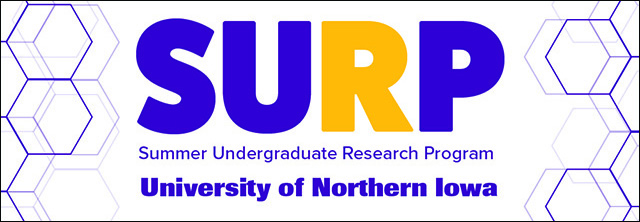
2023 Summer Undergraduate Research Program (SURP) Symposium
Location
ScholarSpace, Rod Library, University of Northern Iowa
Presentation Type
Open Access Poster Presentation
Document Type
poster
Keywords
Cellulose nanocrystals--Additives; Cellulose nanocrystals--Drying;
Abstract
Nanocellulose is synthesized from cellulose, which is the most abundant organic molecule found in nature. Nanocellulose solids are biodegradable and have a strength-to-weight ratio eight times that of steel1. The production of nanocellulose solids is challenging due to the large volume loss that occurs during the curing process as well as the time and cost associated with ultrasonic processing. The loss of volume during curing often results in cracking and deformation of the cured solid. The issues caused by the large volume loss can be mitigated using additives that do not compromise the strength, shape, or machineability of cured nanocellulose. With the addition of either wood glue, glycerin, or sugar to suspended nanocellulose, the solids better maintained the shape of the container in which they were dried with fewer cracks and deformations. The cost and time required for ultrasonic processing can be reduced using a flow through pump system that can process a greater volume in less time than a batch sonication process. Additionally, flow through processing allows for a suspension that is significantly more viscous, which is indicative of a more thorough breakdown of the microcrystalline cellulose (MCC). Through the implementation of additives and flow through processing, we wish to create a product that is large, strong, light-weight, and waterproof. This would enable a widespread replacement of plastics, metals, and ceramics with environmentally friendly nanocellulose materials, and create a space for nanocellulose in extraterrestrial applications.
Start Date
28-7-2023 11:00 AM
End Date
28-7-2023 1:30 PM
Event Host
Summer Undergraduate Research Program, University of Northern Iowa
Faculty Advisor
Timothy E. Kidd
Department
Department of Physics
Copyright
©2023 Dylan Seiffert and Timothy E. Kidd, Ph.D.
Creative Commons License

This work is licensed under a Creative Commons Attribution-NonCommercial 4.0 International License
File Format
application/pdf
Recommended Citation
Seiffert, Dylan and Kidd, T. E., "Flow Through Processing of Nanocellulose for Space Exploration Applications" (2023). Summer Undergraduate Research Program (SURP) Symposium. 18.
https://scholarworks.uni.edu/surp/2023/all/18
Flow Through Processing of Nanocellulose for Space Exploration Applications
ScholarSpace, Rod Library, University of Northern Iowa
Nanocellulose is synthesized from cellulose, which is the most abundant organic molecule found in nature. Nanocellulose solids are biodegradable and have a strength-to-weight ratio eight times that of steel1. The production of nanocellulose solids is challenging due to the large volume loss that occurs during the curing process as well as the time and cost associated with ultrasonic processing. The loss of volume during curing often results in cracking and deformation of the cured solid. The issues caused by the large volume loss can be mitigated using additives that do not compromise the strength, shape, or machineability of cured nanocellulose. With the addition of either wood glue, glycerin, or sugar to suspended nanocellulose, the solids better maintained the shape of the container in which they were dried with fewer cracks and deformations. The cost and time required for ultrasonic processing can be reduced using a flow through pump system that can process a greater volume in less time than a batch sonication process. Additionally, flow through processing allows for a suspension that is significantly more viscous, which is indicative of a more thorough breakdown of the microcrystalline cellulose (MCC). Through the implementation of additives and flow through processing, we wish to create a product that is large, strong, light-weight, and waterproof. This would enable a widespread replacement of plastics, metals, and ceramics with environmentally friendly nanocellulose materials, and create a space for nanocellulose in extraterrestrial applications.


